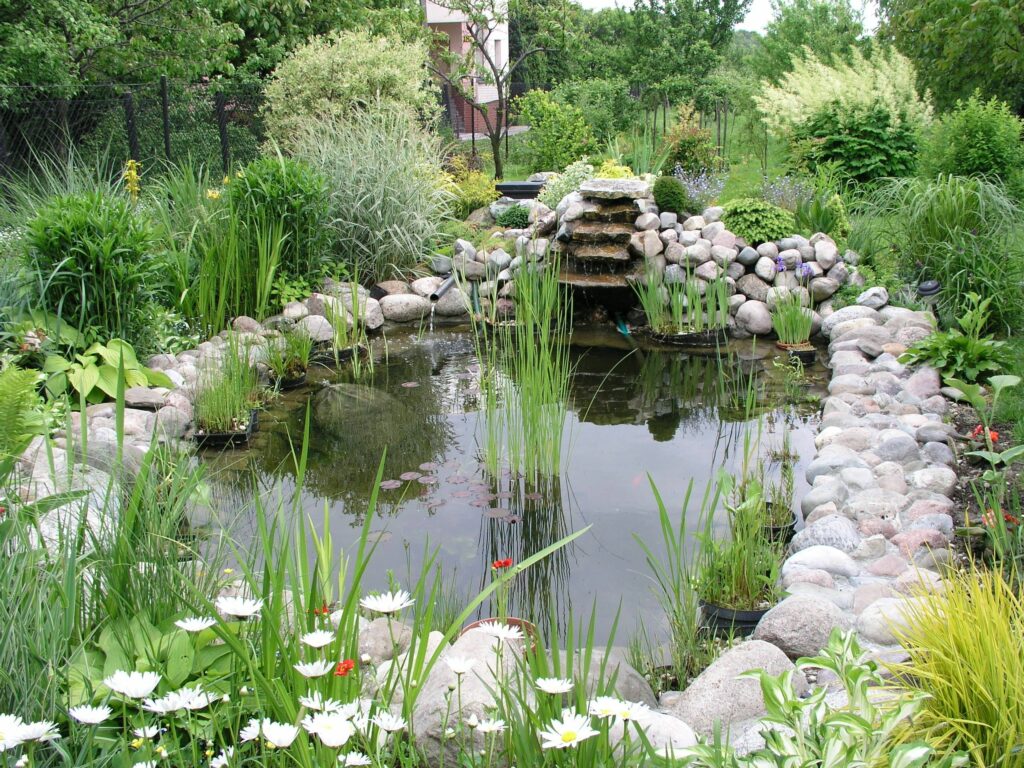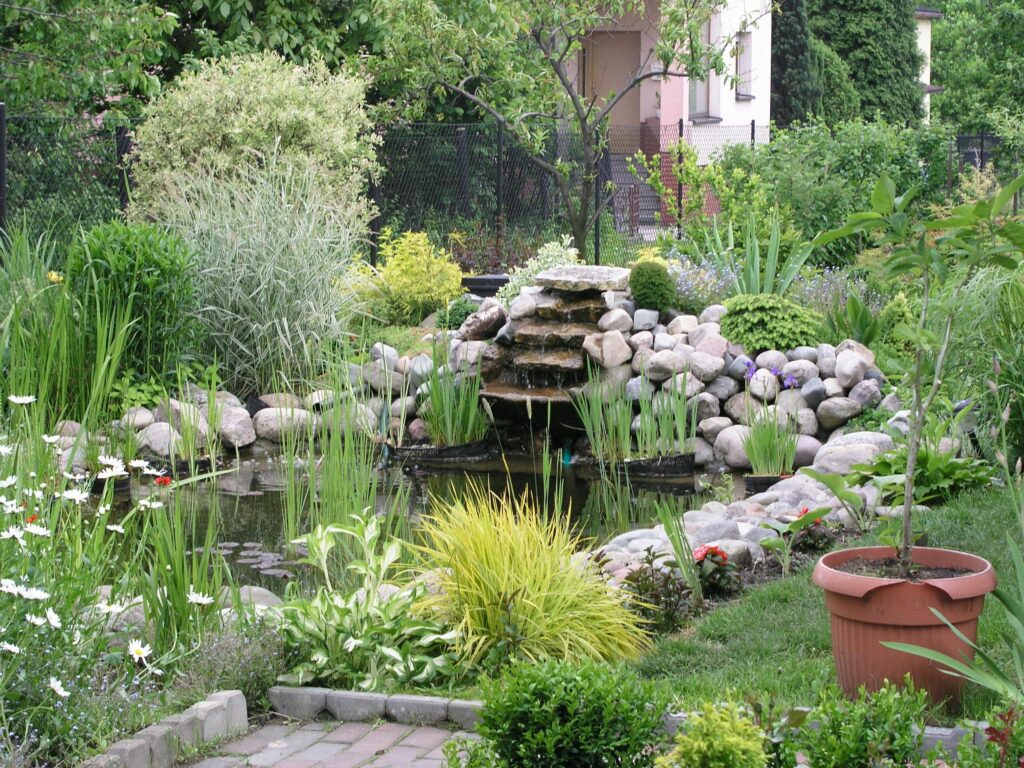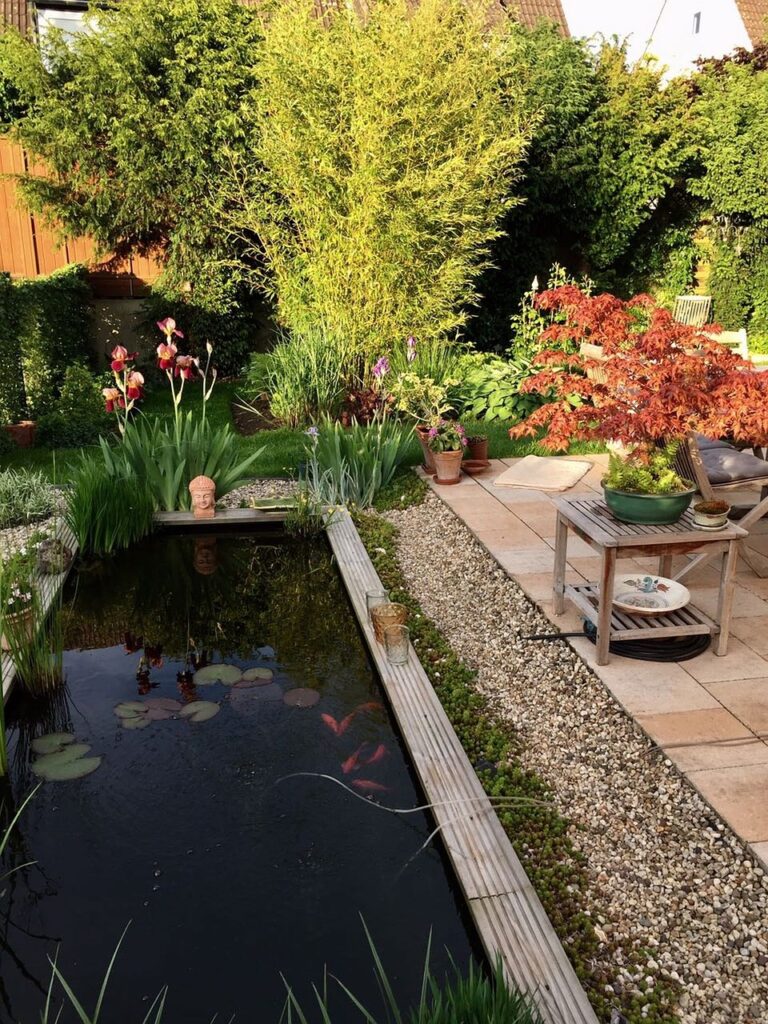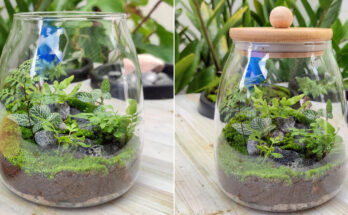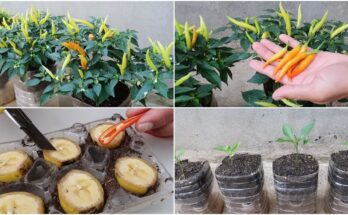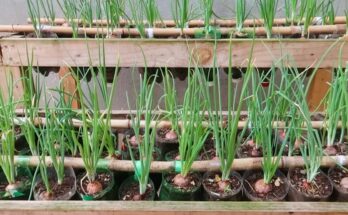The correct landscape design and the right materials are imperative, but what is also crucial is the placement of each stone and planting to produce the desired effect. The art of creating beautiful water falls landscapes involves the ability to artistically place the natural boulders and plantings in such a way that it looks as if Nature had done the work instead of a human. Garden Pond designs may vary from small bird bath types to large garden ponds. The information on this page will make it easy for you to install a pond in your garden. Even the birds will think they are in paradise. Garden Pond Design Aspects The sound of running water relaxes the mind It’s a good idea to have some form of water running into your pond Running water blends in with the noise of traffic, it’s like music to the ears and it calms the soul. A garden pond will create a peaceful welcoming atmosphere. Before you begin, decide on what type of garden pond design you want Integrate the pond design into your over all garden design. The pond design must fit in harmoniously with the rest of the garden design.
The size and location of your pond is not just dependent on the design principles. An often overlooked item is the natural flow of water on the garden site To look natural, you need to adapt your design to this. In a very formal garden design this aspect becomes less important. Remember that you must not fight against nature. If you are thinking of having a river or a waterfall into your pond, Remember, this simple rule: Downhill. This also means taking the natural slope of your garden into account. Different types of ponds influence the garden pond design. The size, purpose and durability required often determine the type of construction. There are different types of ponds: Concrete Ponds made with an inside plastic liner Pre formed ponds: Include fish in your garden pond design. Provide adequate shelter for the fish against birds. One way of doing this is by placing some broken pots in the pond. Their curved surfaces make an excellent hideaway. You must never be able to see the source of the water comes. For example, a large leaf plant could be placed in the area where the river comes from. The start of the river may also be hidden in some other way, for example a large pot or by another focal point. Provide this through plants close to the pond, and water plants that spread across the surface of the water.
Garden Pond Plants: Choose plants for your pond that will fit into your overall garden design. Water plants are dramatically different to normal plants. Introduce the water plants by choosing garden plants that blend in with your marginal plants. Soil nutrients constantly leached into pond water could result in green water. To overcome this, retain the media (soil) by placing gravel on top of the soil in the pot. Terra cotta pots work well in ponds. The sun can also cause the water to go green. Water lilies grow at the base of the pond. The valuable cover of the lily leaves shade the algae out in summer. Try and cover a third to a half of your pond with water lilies. You need one lily for every one and a half to three square meters of pond surface. Grow marginal plants along the edges of your pond. Fill a third of the circumference of your pond with marginal plants. Marginal plants include: Iris laevigate, lobelia fulgens, Mentha aquatica, Pontederia Cordata. Oxygenating plants (submerged plants), provide underwater foliage. These plants use up the waste nutrients in the pond, and starves the algae of nutrients. Use five bunches of oxygenating plants for every square meter.
You can get these plants from pet shops that sell fish and aquarium supplies. Oxygenating plants include: Elodea densa, and Ranunculus peltatus. Floating plants can be attached to two empty plastic cool drink bottles. You can also get floating pots from your local nursery. Introduce one for every one to one and a half square meters of surface area A good floating plant is Azolla spp/Lemna. Plant bog plants (moisture-loving plants) in damp soil near the edge of the pond or a constructed bog garden. Most bog plants prefer to have only their roots in the water. Consider a bog garden as part of your garden pond design. Treating the Dreaded Algae Problem Algae are single celled plants. Spores are present in the air and will colonize any new body of water. They are rarely harmful to water-life, but are unsightly. In severe cases they may cause problems with the health of the fish. There are a variety of different algae that will colonize a pond, from thin long strands to floating clumps.
Algae control can be done by obtaining a natural balance using a pond filter, an ultraviolet light purifier and as a last resort an algaecide. The natural balance consists of starving the algae of light and nutrients. Best form of algae control is a correctly balanced pond with enough plant material to screen out the sunlight and prevent the growth of algae. A mesh bag filled with barley straw can assist in algae control. The silicates in the straw bind nutrients, such as phosphates. The straw seems to promote as organism that feeds off the algae. Straw needs to be replaced on a regular basis as it will start to decompose and pollute the water. I suggest you replace the straw every six months. You can buy barley wheat from your local health shop. Enjoy your Pond Doing a garden pond design for your garden is really worth the effort. I have sat on my patio on many occasions and just marveled at the dragonflies, butterflies and birds visiting and enjoying the water. It is so therapeutic and a special meditation retreat for me. It’s easy to give your garden statuary value.
Integrate the pond design into your over all garden design. Terra cotta pots work well in ponds. Try and cover a third to a half of your pond with water lilies. Grow marginal plants along the edges of your pond. These plants use up the waste nutrients in the pond, and starves the algae of nutrients. Consider a bog garden as part of your garden pond design. There are a variety of different algae that will colonize a pond, from thin long strands to floating clumps. Algae control can be done by obtaining a natural balance using a pond filter, an ultraviolet light purifier and as a last resort an algaecide. Best form of algae control is a correctly balanced pond with enough plant material to screen out the sunlight and prevent the growth of algae. [SUBTOPIC=4] Great Gardening Tips helps you to find multiple resources available on the web for water garden pond plan. [SUBTOPIC=5] It has been described as “Nature’s Song,” that relaxing sound of a mountain stream that leads us to a quiet place of balance and serenity. The art of creating beautiful water falls landscapes involves the ability to artistically place the natural boulders and plantings in such a way that it looks as if Nature had done the work. The correct landscape design and the right materials are imperative, but what is also crucial is the placement of each stone and planting to produce the desired effect. Garden Pond Design for Tranquility and Peace A good garden pond design wows just about any garden.
Garden Pond designs may vary from small bird bath types to large garden ponds Water seems to make a garden look bigger. The reflective qualities in a pond attract us, and nature. If your garden pond is designed correctly, it can add a new dimension to your garden. Even the birds will think they are in paradise. Garden Pond Design Aspects The sound of running water relaxes the mind. Its a good idea to have some form of water running into your pond Running water blends in with the noise of traffic, its like music to the ears and it calms the soul. A garden pond will create a peaceful welcoming atmosphere. Before you begin, decide on what type of garden pond design you want Integrate the pond design into your over all garden design The pond design must fit in harmoniously with the rest of the garden design The size and location of your pond is not just dependent on the design principles. An often overlooked item is the natural flow of water on the garden site To look natural, you need to adapt your design to this.
In a very formal garden design this aspect becomes less important. Remember that you must not fight against nature. If you are thinking of having a river or a waterfall into your pond, remember this simple rule: Downhill. This also means taking the natural slope of your garden into account Different types of ponds influence the garden pond design. The size, purpose and durability required often determine the type of construction. There are different types of ponds: Concrete Ponds made with an inside plastic liner Pre formed ponds. Include fish in your garden pond design. Provide adequate shelter for the fish against birds. One way of doing this is by placing some broken pots in the pond. Their curved surfaces make an excellent hideaway. You must never be able to see the source of the water comes. For example, a large leaf plant could be placed in the area where the river comes from. The start of the river may also be hidden in some other way, for example a large pot or by another focal point. Provide this through plants close to the pond, and water plants that spread across the surface of the water.
Garden Pond Plants Choose plants for your pond that will fit into your overall garden design. Water plants are dramatically different to normal plants. Introduce the water plants by choosing garden plants that blend in with your marginal plants Soil nutrients constantly leached into pond water could result in green water. To overcome this, retain the media (soil) by placing gravel on top of the soil in the pot. Terra cotta pots work well in ponds. The sun can also cause the water to go green. Water lilies grow at the base of the pond. The valuable cover of the lily leaves shade the algae out in summer. Try and cover a third to a half of your pond with water lilies. You need one lily for every one and a half to three square metres of pond surface. Grow marginal plants along the edges of your pond. Fill a third of the circumference of your pond with marginal plants Marginal plants include: Iris laevigate, lobelia fulgens, Mentha aquatica, Pontederia Cordata. Oxygenating plants (submerged plants), provide underwater foliage.
These plants use up the waste nutrients in the pond, and starves the algae of nutrients. Use five bunches of oxygenating plants for every square metre You can get these plants from pet shops that sell fish and aquarium supplies Oxygenating plants include: Elodea densa, and Ranunculus peltatus. Floating plants can be attached to two empty plastic cool drink bottles You can also get floating pots from your local nursery. Introduce one for every one to one and a half square metres of surface area A good floating plant is Azolla spp/Lemna. Plant bog plants (moisture-loving plants) in damp soil near the edge of the pond or a constructed bog garden. Most bog plants prefer to have only their roots in the water, Consider a bog garden as part of your garden pond design. See our page on how to build a pond for an easy way to build and integrate a bog garden into your garden pond design. Treating the Dreaded Algae Problem Algae are single celled plants. Spores are present in the air and will colonize any new body of water They are rarely harmful to water-life, but are unsightly. In severe cases they may cause problems with the health of the fish.
There are a variety of different algae that will colonize a pond, from thin long strands to floating clumps. Algae control can be done by obtaining a natural balance using a pond filter, an ultraviolet light purifier and as a last resort an algaecide. The natural balance consists of starving the algae of light and nutrients. Best form of algae control is a correctly balanced pond with enough plant material to screen out the sunlight and prevent the growth of algae A mesh bag filled with barley straw can assist in algae control. The silicates in the straw bind nutrients, such as phosphates. The straw seems to promote as organism that feeds off the algae. Straw needs to be replaced on a regular basis as it will start to decompose and pollute the water. I suggest you replace the straw every six months. You can buy barley wheat from your local health shop. Enjoy your Pond Doing a garden pond design for your garden is really worth the effort. I have sat on my patio on many occasions and just marveled at the dragonflies, butterflies and birds visiting and enjoying the water. It is so therapeutic and a special meditation retreat for me.
Do not overlook safety
Garden Pond Safety Do not overlook safety in your design. Water is always a hazard especially for small children Design your pond with child safety in mind A sturdy stainless steel grid a few inches under the water surface should provide protection on a deep pond A safer bet would be to have a shallow pond where small children will be able to crawl out of the pond Whatever design you decide on should adequately address this issue No matter how beautiful a design, it can never warrant the loss of a child or a pets life.
